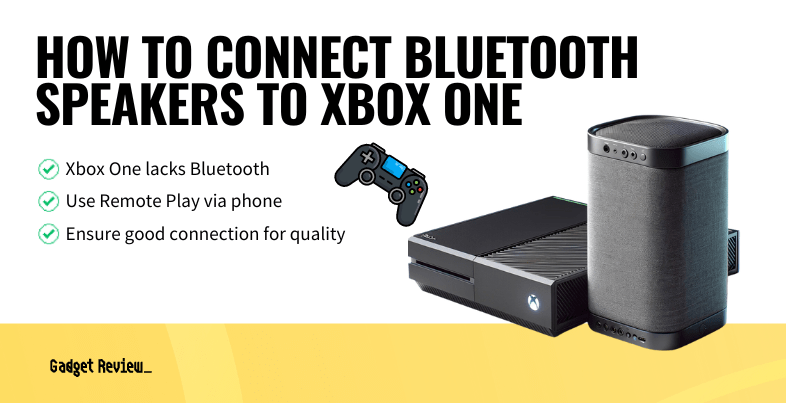The retail landscape has seen titans rise, reshape how we shop and eventually fade into history. These department stores were once cornerstones of communities, offering more than just merchandise—they created experiences, memories, and local traditions. Their stories are marked by bold innovations, fierce competition, and the relentless evolution of consumer habits. Today, we’re taking a closer look at 17 of these retail giants, exploring their unique journeys, the reasons behind their downfall, and the lasting imprint they’ve left on the world of commerce.
17. Montgomery Ward: A Retail Pioneer’s Fall

Montgomery Ward was a trailblazer back in the day, known for its impressive product range and its game-changing customer satisfaction guarantees. But as suburban shopping malls grew and the competition heated up, they couldn’t keep up. This once-familiar name in American retail faded away, though many of its old locations still stand, now repurposed for a variety of uses.
Montgomery Ward’s story is a great reminder of how crucial it is to adapt in the fast-changing retail landscape. As shopping habits evolved, Montgomery Ward struggled to adjust—and it paid the price. Yet, its buildings have found new life as community hubs, carrying on the legacy in a different form.
16. Woolworths: The Legacy of the Lunch Counter

Woolworths was more than just a store—it was a cultural touchstone. The lunch counters in particular played a big role in the civil rights movement. But despite its iconic status, declining sales and a lack of innovation eventually led to its closure. These days, many former Woolworths locations have been reimagined as trendy restaurants and boutiques.
The shift from Woolworths’ heyday to its closure reminds us that innovation isn’t optional—it’s essential. While Woolworths is no longer around, its legacy lives on in the fond memories of those who experienced it and the revamped spaces it left behind.
15. Sears: The King Who Lost His Crown

Sears was once the undisputed heavyweight in American retail. Their catalog, especially the beloved Wish Book, was a holiday tradition for countless families. Sears revolutionized home shopping with trusted brands like Craftsman and Kenmore. But as the digital age took over, Sears struggled to keep up, with online giants like Amazon stealing its thunder.
Sears may have fallen, but many of its old stores have been transformed into community centers, offices, and even schools. It’s a perfect example of how retail spaces are evolving to meet new needs in today’s world.
14. Service Merchandise: The Catalog Showroom Experiment

Remember Service Merchandise? They had a unique model where you’d browse the catalog, then pick up your items in-store. As shoppers started craving instant gratification, this approach fell out of favor. Internal management struggles didn’t help, and the brand eventually closed its doors.
But, like many others on this list, the old Service Merchandise buildings have found new purposes. It’s a sign of how retail spaces continuously evolve, adapting to whatever the market demands next.
13. Toys “R” Us: From Toy Giant to Bankruptcy

For generations, Toys “R” Us was the place to go for all things toy-related. But between crushing debt and stiff competition from online retailers like Amazon, the company couldn’t keep up, even with attempts at reinvention. After filing for bankruptcy, the brand has attempted a comeback with pop-up stores and retail partnerships.
These efforts show that the spirit of Toys “R” Us is still alive, and the brand is working to adapt to today’s retail landscape. We might just see it back in full force one day.
12. RadioShack: The Electronics Guru That Fell Behind

Once a go-to for personal electronics, RadioShack was ahead of its time in the early days of computing and home tech. But as consumer habits shifted online, RadioShack couldn’t keep pace. By the time they tried to modernize, it was too late.
Today, RadioShack is trying to reinvent itself by focusing on niche markets and online retail. It’s a tough road, but their efforts underscore the constant need for innovation in a rapidly changing market.
11. Gimbels: Macy’s Fierce Competitor

Gimbels was a major player in retail and even had its own Thanksgiving Day parade! But fierce competition from Macy’s and changing shopping habits eventually led to its closure. The famous Gimbels building in NYC still stands, repurposed to fit the city’s ever-changing needs.
This transformation mirrors the ongoing evolution of retail spaces and how they adapt to urban landscapes and shifting consumer demands.
10. Kmart: The Blue Light Special That Burned Out

Once famous for its blue light specials and budget-friendly finds, Kmart started to lose steam when it couldn’t keep up with Walmart and Target. The 2004 merger with Sears was meant to strengthen both brands, but it only compounded their financial struggles. As more consumers shifted to online shopping, Kmart’s fate was sealed.
Today, former Kmart stores have been transformed into everything from gyms to community colleges, showing just how adaptable these spaces can be as retail evolves.
9. Caldor: The Premium Discount Store

Caldor tried to carve out its own niche with more upscale marketing, but it couldn’t stand up to the discount giants. Changing shopping habits and increasing competition ultimately pushed it out of the market. However, like many others, Caldor’s former stores have found new life in different roles.
It’s a testament to how retail spaces can continuously reinvent themselves, staying relevant even when the original store is long gone.
8. Hills: The Holiday Favorite

Hills was known for its festive promotions and family-friendly atmosphere, but like many others, it struggled to compete with big-box retailers and the rise of e-commerce. Hills stores have since been transformed into new retail outlets or other community-focused spaces, showcasing the resilience of these old stores.
Their story is another reminder of how retail real estate adapts and evolves with the times.
7. Tower Records: A Music Mecca Lost to the Digital Age

Before Spotify or iTunes, Tower Records was the go-to place for music lovers. They were pioneers, with their huge selections and in-store performances. But the digital music revolution changed everything, and Tower couldn’t keep up. Though the stores are long gone, some of the original locations remain as monuments to the brand’s impact on music culture.
Tower Records’ legacy still resonates with music fans today, serving as a reminder of the rapid shifts that technology can bring to an industry.
6. Hudson’s: A Detroit Icon

Hudson’s was more than just a department store—it was a Detroit institution, hosting everything from major cultural events to memorable holiday traditions. But as Detroit’s downtown started to decline and suburban shopping centers grew in popularity, Hudson’s found itself struggling. Despite efforts to reinvent itself, the store couldn’t keep pace and eventually closed its doors.
However, Hudson’s iconic building has been repurposed, symbolizing Detroit’s resilience and the city’s ongoing transformation. This shift mirrors the broader changes happening in urban centers across the country, where communities are adapting old spaces to meet new economic and social needs.
5. Kaufmann’s: Pittsburgh’s Beloved Store

Kaufmann’s was a cherished staple in Pittsburgh, known for its extravagant holiday window displays and impeccable customer service. But like many other department stores, Kaufmann’s fell victim to shifting consumer behaviors and the rise of online shopping. The store’s merger with Macy’s marked the end of an era, though its grand flagship building remains, now under the Macy’s banner.
The evolution of Kaufmann’s into a modern retail space is a perfect example of how even beloved brands need to adapt or risk being left behind. While the Kaufmann’s name may no longer exist, its spirit continues in the transformed spaces that still serve the community.
4. Zayre: The Discount Pioneer That Faded

Zayre was a trailblazer in the world of discount retail, but intense competition from other discount giants eventually pushed it out of the market. Known for its bold and memorable marketing campaigns, Zayre couldn’t maintain its position in an increasingly competitive field. The stores were eventually sold and rebranded, leaving only memories of the once-popular chain.
Zayre’s story is a common one in retail—staying at the forefront requires constant innovation. The rebranding of Zayre locations reflects the retail industry’s trend toward consolidation and transformation.
3. Mervyn’s: A Community Favorite Turned Cautionary Tale

Mervyn’s held a special place in the hearts of shoppers across the Western U.S., thanks to its mix of affordable fashion and home goods. But economic downturns and the rise of competitors like Target and Walmart proved too much for the brand to handle. Despite attempts to modernize, Mervyn’s was ultimately forced to close.
However, many former Mervyn’s locations have since been repurposed, highlighting the retail industry’s ability to adapt to shifting consumer needs and economic realities. It’s a reminder that even the most beloved brands need to evolve or risk being left behind.
2. Marshall Field’s: A Retail Legend Lives On

Marshall Field’s was a name synonymous with luxury, impeccable service, and one of the most iconic department store buildings in the U.S. Known for its historic Chicago flagship and its annual holiday window displays, the brand was beloved by many. However, when it was absorbed into Macy’s in the early 2000s, it marked the end of an era.
Even though Marshall Field’s no longer exists in name, its legacy lives on in the iconic flagship store in Chicago. Macy’s has preserved much of the building’s grandeur, allowing it to remain a part of the city’s cultural fabric while catering to modern shoppers.
1. Bonwit Teller: Fashion Forward but Forgotten

Bonwit Teller was a major player in the luxury retail world, known for bringing high-end fashion to its well-heeled clientele. But as competition from emerging luxury brands and online shopping intensified, Bonwit Teller struggled to keep up. The brand ultimately disappeared, but its influence on the fashion industry remains.
The repurposing of Bonwit Teller’s prime retail locations reflects how even the most prestigious brands can fall behind if they don’t innovate. The shift from traditional luxury to direct-to-consumer and online shopping continues to reshape the retail landscape, leaving brands like Bonwit Teller in the past.




























